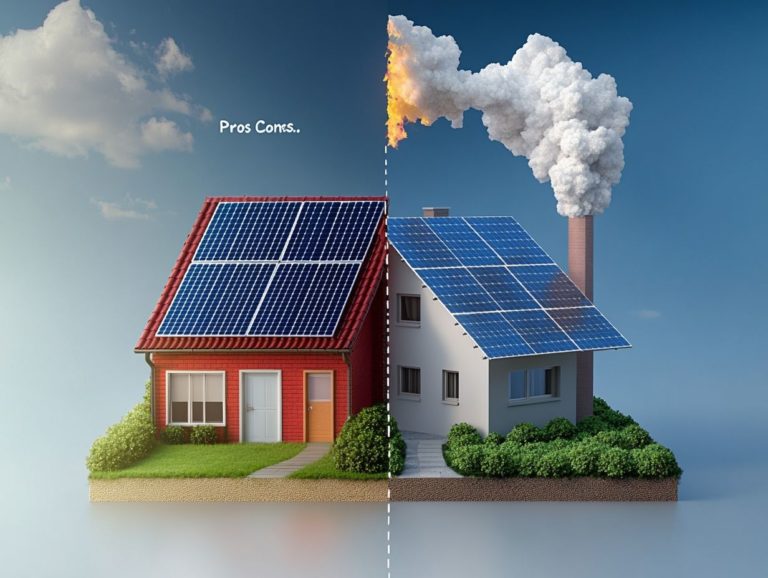“5 Essential Solar Installation Tips for Homeowners”
Imagine transforming your home with solar energy, providing you with significant environmental advantages and long-term financial savings.
Yet, with many factors to weigh, navigating the journey to a successful solar installation may seem daunting.
This article offers five essential tips designed to guide you through the process from grasping your energy needs and choosing the right solar panels to locating a reputable installer.
You’ll also explore costs, incentives, maintenance, and common pitfalls, empowering you to harness the sun’s power with confidence.
Contents
- Key Takeaways:
- 1. Understanding Your Energy Needs
- 2. Choosing the Right Solar Panels
- 3. Finding a Reputable Solar Installer
- 4. Understanding the Costs and Incentives
- 5. Proper Maintenance and Monitoring
- What Are the Benefits of Switching to Solar Energy?
- Frequently Asked Questions
- What Are the 5 Essential Solar Installation Tips for Homeowners?
- How Do I Evaluate My Home’s Energy Needs for Solar Installation?
- What Should I Research When Looking for Solar Panel Options?
- How Can I Find a Reputable Solar Installer?
- What Financial Incentives Are Available for Solar Installation?
- How Can I Maintain My Solar Panels?
Key Takeaways:
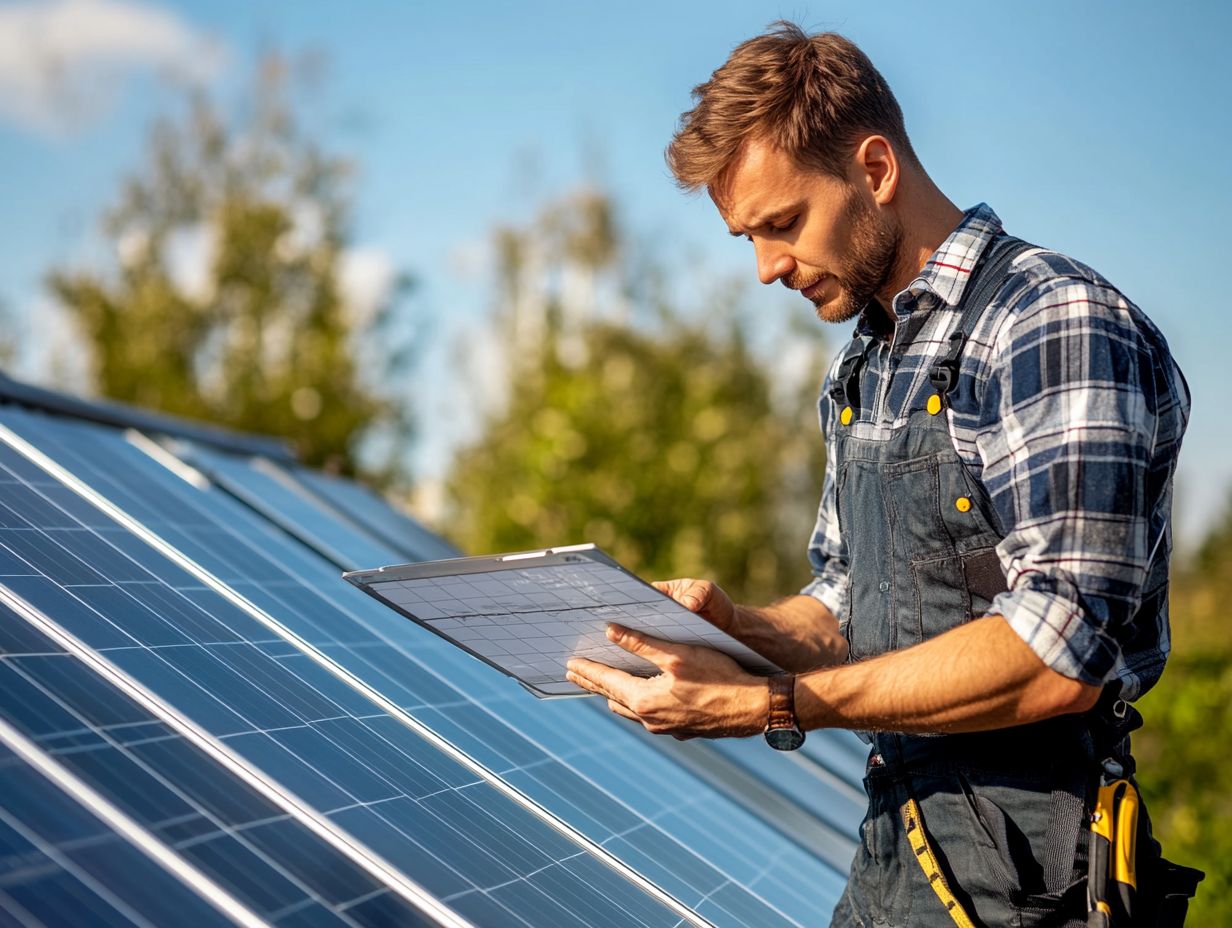
Understand your energy needs before deciding on a solar installation to ensure the right system for your home.
Choose high-quality solar panels from a reputable manufacturer to guarantee efficiency and durability.
Research and find a reputable solar installer with experience and positive reviews to ensure proper installation and maintenance.
1. Understanding Your Energy Needs
Understanding your energy needs is key to a successful solar installation. It helps you assess power demand and select the right solar panels tailored to your specific requirements.
To evaluate your energy consumption effectively, examine your past utility bills and pinpoint peak usage times. This will give you a clearer picture of your energy needs during high-demand periods.
Calculating the amount of sunlight your area receives at its best times is vital, as it determines the solar energy potential of your system.
By considering these elements, you can select solar panels that align with your usage patterns and maximize performance under local sun conditions.
This thoughtful approach ensures your chosen system efficiently meets your energy demands, setting the stage for immediate benefits and long-term sustainability.
2. Choosing the Right Solar Panels
Choosing the right solar panels is vital for getting the most from your solar system. Different types Monocrystalline, Polycrystalline, and Thin-film panels each come with unique benefits regarding efficiency, aesthetics, and longevity.
Monocrystalline panels are known for their impressive efficiency rates, making them an excellent choice if your roof space is limited.
If you re seeking something more budget-friendly, Polycrystalline panels deliver decent performance and are ideal for larger installations.
Meanwhile, Thin-film panels offer flexibility and lightweight designs that make them perfect for unconventional roof structures.
It’s essential to consider factors like regional climate, as they significantly influence the panels’ performance and the overall aesthetics of your home.
Ultimately, you’ll want to strike a balance between functionality and visual appeal to make the best choice for your solar system.
3. Finding a Reputable Solar Installer
Finding a reputable solar installer is a pivotal step in your solar installation journey. Opting for a qualified installer ensures compliance with the National Electrical Code and aligns with local authorities, safeguarding your investment.
To effectively vet potential installers, begin by checking their certifications; these serve as validation of their expertise and commitment to industry standards.
Customer reviews can illuminate the installer s reliability and workmanship, offering a clearer picture of their past projects. Don t hesitate to request references for valuable first-hand accounts of the service quality you can expect.
It s equally important to evaluate the installer s familiarity with local regulations and environmental conditions. This knowledge can significantly influence the design and efficiency of solar systems, tailored to meet the unique challenges of your region.
4. Understanding the Costs and Incentives
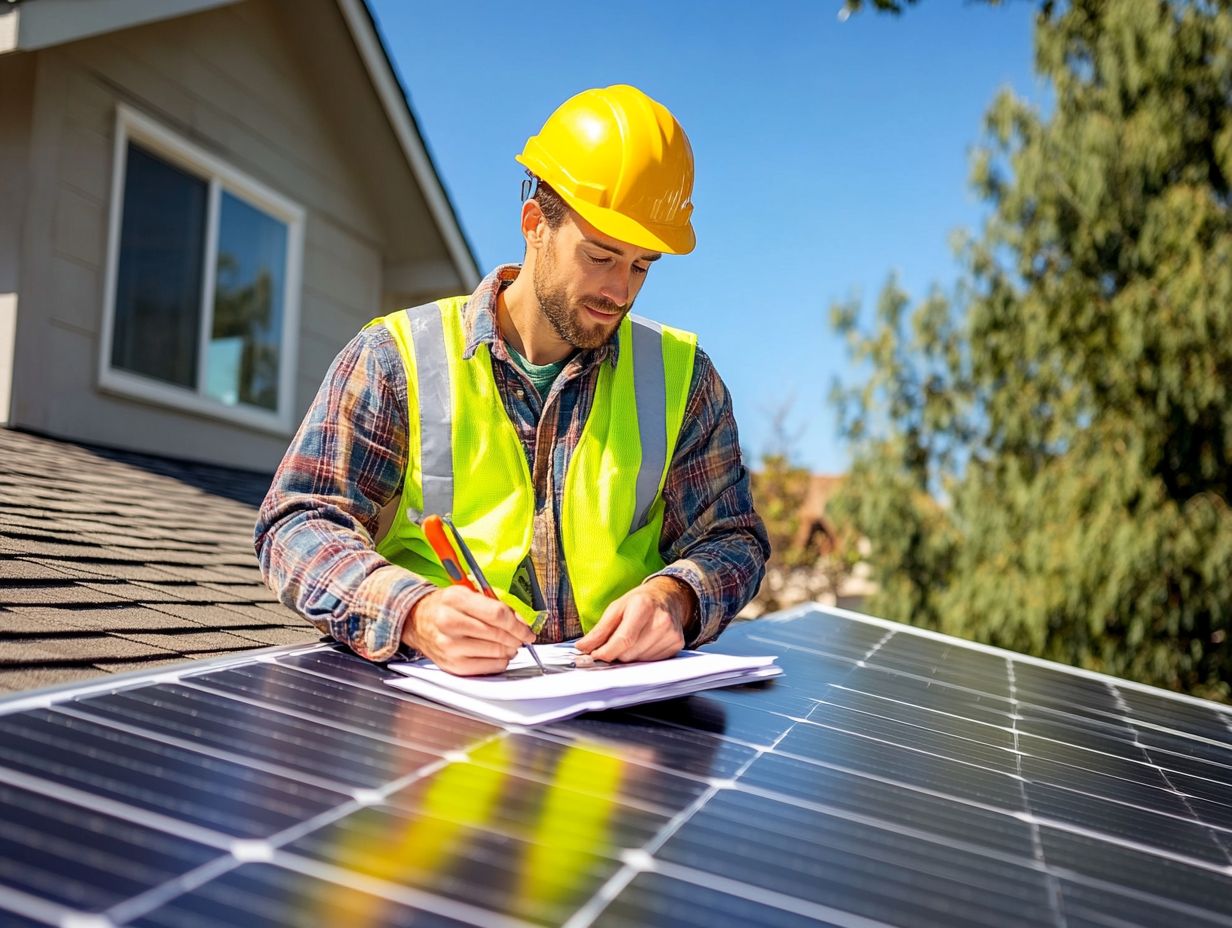
Understanding the costs of solar installation is essential for homeowners. This knowledge helps you protect your investments and make informed choices about home improvements.
These costs typically involve equipment such as solar panels and inverters, installation labor, and necessary permitting fees. All of these can fluctuate depending on your location and the size of the system you choose.
You’ll find numerous financial incentives worth exploring, including local and federal tax credits that can significantly reduce your initial expenses. Utility companies might also offer rebates that make the shift to renewable energy even more accessible for you.
Investing in solar energy promotes sustainable living and promises long-term savings on your energy bills. It also enhances your property value and helps the environment.
5. Proper Maintenance and Monitoring
Proper maintenance and monitoring of your solar energy system are vital to ensure its longevity and peak performance. Environmental factors can impact the efficiency of components like the solar inverter battery, which converts energy from your panels to power your home. This care is critical.
Don’t wait! Schedule routine inspections now to catch issues early. Ideally, aim for inspections twice a year to identify wear and tear before it develops into a significant issue.
Regularly cleaning your solar panels will keep them free from dirt and debris, ensuring optimal sunlight absorption.
Implementing a robust monitoring system is equally essential. These systems track performance metrics in real-time, enabling you to spot any irregularities or dips in energy output.
By staying vigilant and quickly addressing minor issues like checking for loose connections or pesky shading obstacles you can significantly enhance the overall efficiency and lifespan of your solar installation.
What Are the Benefits of Switching to Solar Energy?
Switching to solar energy presents a wealth of benefits for you as a homeowner. Imagine slashing your energy bills! You’ll also enhance your property value through thoughtful upgrades and make a positive impact on the environment by reducing your reliance on fossil fuels all while enjoying solutions tailored specifically to your energy needs.
By harnessing the sun’s power, you not only help decrease greenhouse gas emissions but also actively support a sustainable future. This renewable energy source dramatically lowers your carbon footprint, promoting cleaner air and a healthier ecosystem for everyone.
Financially, you can look forward to long-term savings. Solar systems typically come with enticing incentives and rebates that help alleviate upfront costs. With scalable options at your disposal, you can customize your installation to match your unique energy demands, ensuring efficient use of energy and maximizing the benefits of your investment.
What Are the Different Types of Solar Panels Available?
You’ll find a range of solar panels on the market, including Monocrystalline, Polycrystalline, and Thin-film options. Each presents its own set of advantages tailored to different needs and preferences.
When selecting the right type for your situation, it s crucial to weigh factors such as efficiency, cost, aesthetics, and installation requirements.
Monocrystalline panels often shine for their high efficiency and elegant design, making them perfect for tight spaces where you want to maximize output. On the flip side, Polycrystalline panels are generally more budget-friendly but may require more room because of their lower efficiency.
Thin-film solar panels, while not the most efficient, boast a lightweight and flexible design, making installation on unconventional surfaces a breeze.
If you’re a homeowner with limited roof space, you might find Monocrystalline panels to be your best bet. For those keeping a close eye on their budget, Polycrystalline options could be more enticing. And if versatility is what you re after, Thin-film variations could be just the ticket for your unique installation needs.
What Are the Qualifications to Become a Solar Installer?
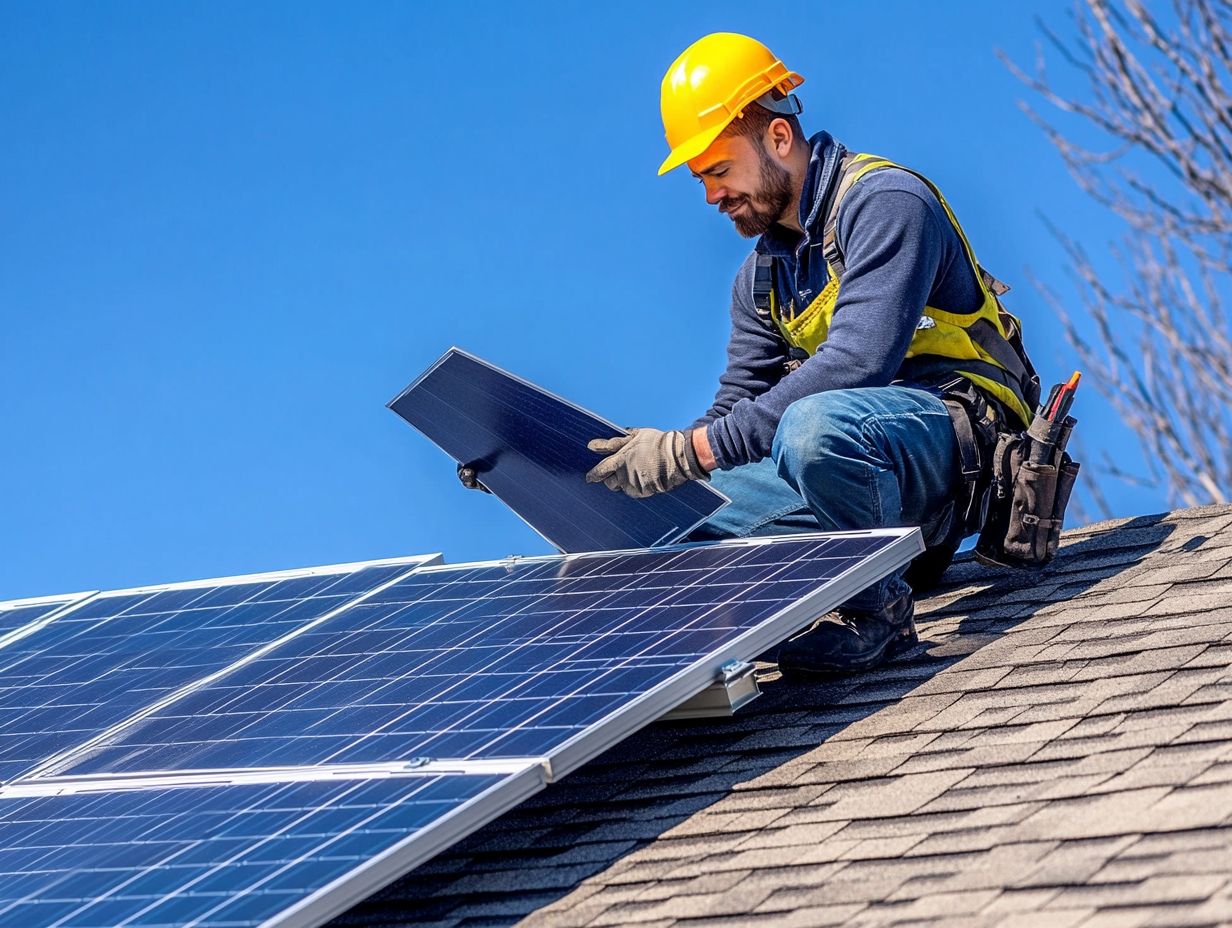
To become a qualified solar installer, you need specific qualifications. Complete training programs, obtain necessary certifications, and understand compliance regulations for proper solar installation.
The NABCEP certification is particularly noteworthy. It serves as a benchmark of quality and validates your expertise in the field.
However, certifications alone won’t cut it. Hands-on experience is invaluable and equips you with skills and insights that theoretical training cannot provide.
Continuous education is crucial in this rapidly evolving industry. Stay updated on emerging technologies, regulations, and best practices.
By committing to lifelong learning, you enhance your knowledge and contribute to the advancement of solar technologies.
What Are the Different Financing Options for Solar Installation?
You have various financing options for your solar installation. These include power purchase agreements, cash purchases, and loans.
Each pathway has distinct advantages, allowing you to safeguard your investment and capitalize on financial incentives.
Understanding how these choices influence your costs is essential for making informed decisions. Cash purchases require a substantial upfront investment but offer tax credits and increased property value without ongoing payments.
Power Purchase Agreements (PPAs) provide immediate savings with minimal upfront costs. However, they may tie you to a longer-term commitment that affects total costs.
Loans offer flexibility in payments but may incur interest, altering your financial landscape. Tailor every option to fit your unique financial situation for the best results.
What Are the Common Mistakes to Avoid in Solar Installation?
You can sidestep common pitfalls by hiring a qualified installer and understanding compliance regulations. Familiarize yourself with these guidelines early on.
Assessing your roof structures is crucial. Overlooking their condition might lead to inadequate support for your solar panels.
Be mindful of local environmental factors, such as shading from nearby trees or buildings, which could impact solar efficiency. Many homeowners underestimate their power demands, leading to insufficient energy production.
Conduct a thorough site evaluation and consult professionals to customize the installation to your needs. This strategy ensures an exciting and efficient solar energy setup.
How Can You Tell If Your Solar Panels Are Working Properly?
To ensure optimal performance, regularly monitor energy output and system performance. Schedule maintenance checks to confirm that all components, including the inverter and battery, are functioning well.
Use a reliable monitoring system to track performance metrics indicating the health of your solar setup. If you notice a sudden drop in energy production or error codes, address these issues immediately.
Regular assessments, including cleaning the panels and checking for shading, significantly enhance efficiency. Ensure connections remain secure and inspect for wear and tear to prolong the lifespan of your system.
Taking a proactive approach to maintenance maximizes energy generation and protects your investment for the long haul.
Frequently Asked Questions
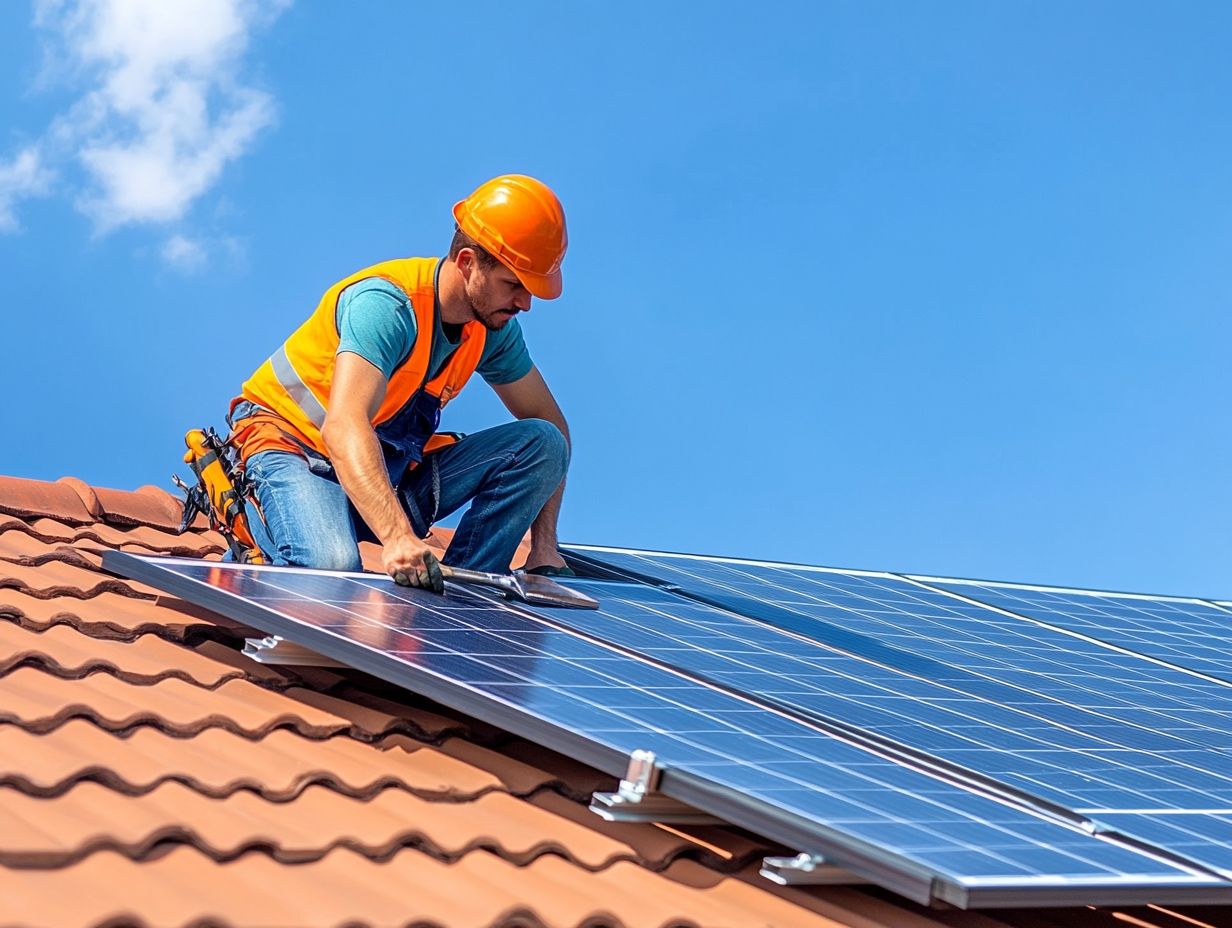
What Are the 5 Essential Solar Installation Tips for Homeowners?
Here are five essential tips: evaluate your home’s energy needs, research solar panel options, hire a reputable installer, understand financial incentives, and maintain your solar panels regularly.
How Do I Evaluate My Home’s Energy Needs for Solar Installation?
Check your past electricity bills to understand your energy use. Consider future changes like new appliances or home expansion, too.
What Should I Research When Looking for Solar Panel Options?
Look into the brand, efficiency rating (how well they convert sunlight to electricity), size, and cost of the panels. Don’t forget to read customer reviews and warranties to ensure quality.
How Can I Find a Reputable Solar Installer?
Ask friends and family for recommendations. Read online reviews and check certifications before getting quotes from multiple installers to compare prices and services.
What Financial Incentives Are Available for Solar Installation?
Explore tax credits, rebates, and net metering (getting paid for excess energy your panels produce). Check government websites or consult your installer for details.
How Can I Maintain My Solar Panels?
Regularly clean your panels and check for damage or debris. Schedule professional maintenance every few years to keep them working well.



